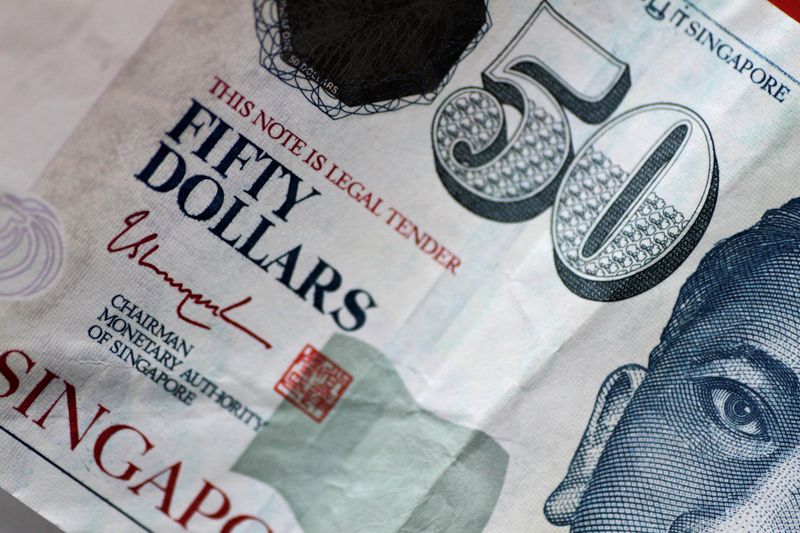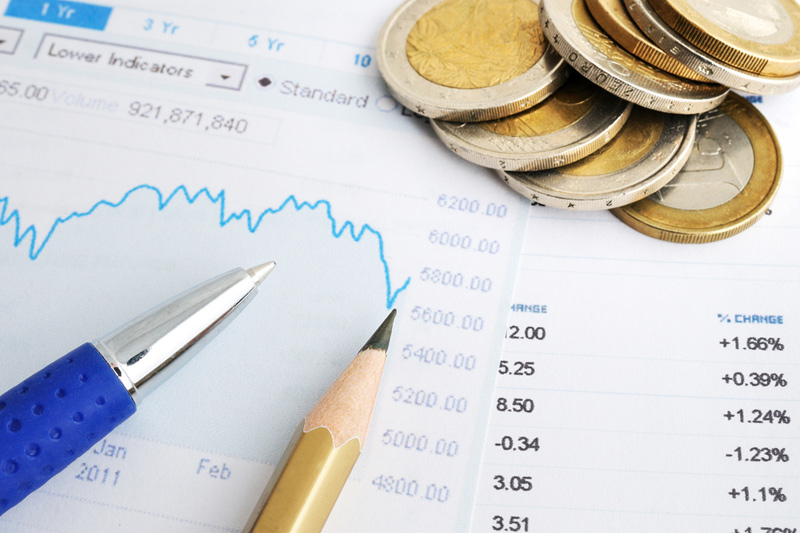By Roushni Nair
(Reuters) –
Investors have turned bullish on the Singapore dollar for the first time since mid-December as the city-state’s growth and inflation dynamics continue to support the local unit, while bearish bets on most Asian currencies have eased, a Reuters poll showed on Thursday .
Long positions on the Singapore dollar were at their highest level since early April 2023, while bearish bets on the Malaysian ringgit fell to levels seen in April last year, a fortnightly poll of 10 analysts showed.
The Monetary Authority of Singapore (MAS) appears to be in no hurry to ease policy after core inflation topped 3% in May, with second-quarter growth strong at 2.9%, according to analysts.
MAS will conclude its policy meeting on Friday, with analysts expecting the central bank to maintain its hawkish stance and stick to its current policy settings, even though inflation was at a two-year low in June.
“The strong data (growth and inflation) and the continued appreciation of the SNEER (nominal effective exchange rate of the Singapore dollar) ensure that we continue to value the SGD on a relative value basis and against low interest rates in the region,” analysts at Bank of America said in a note.
However, any spike in oil prices due to geopolitical events would put upward pressure on the Singapore dollar’s safe-haven status, she added.
Singapore is one of the few countries in the world with a triple-A sovereign bond rating, reflecting exceptionally strong fiscal and external balance sheets, factors that strengthen Singapore’s position as a safe haven for investors.
Meanwhile, markets have priced in a 100% chance of a US Federal Reserve rate cut as early as September, with investors awaiting a slew of macroeconomic data, including second-quarter growth figures, to further validate their expectations. [FEDWATCH]
Falling US interest rates would take the shine off the dollar as it could lead to lower foreign investment while creating risky sentiment for emerging Asian currencies.
This has resulted in a significant loosening of short bets on the Philippine peso and the Thai baht.
Bearish positions on the Chinese yuan and Taiwan dollar were at their highest levels since June 27.
Markets in Taiwan extended their losses, pressured by statements from Washington last week hinting at the possibility of tighter restrictions on exports of advanced semiconductor technology to China.
Taiwanese markets were closed for the second day in a row due to bad weather.
The Asian currency positioning poll focuses on what analysts and fund managers believe are the current market positions in nine Asian emerging market currencies: the Chinese Yuan, the South Korean Won, the Singapore Dollar, the Indonesian Rupiah, the Taiwan Dollar , the Indian rupee, the Philippine peso, the Malaysian ringgit and the Thai baht.
The poll uses estimates of net long or short positions on a scale of minus 3 to plus 3. A score of plus 3 indicates that the market is significantly long in US dollars.
The figures include positions via non-deliverable forwards (NDFs).
Below are the survey results (US dollar positions versus each currency):
DATE USD/SG USD/ID USD/IN USD/TH
DRRB
25-Jul-24 1.07 0.79 -0.33 0.35 0.86 0.12 0.39 0.43 0.02
11-Jul-24 1.05 0.87 0.06 0.73 0.68 0.22 1.03 0.86 0.51
27-Jun-24 1.34 1.28 0.80 1.49 0.88 0.46 1.00 1.37 0.91
13-Jun-24 0.95 0.87 0.62 1.22 0.64 0.37 1.00 1.23 0.92
30-May-24 1.05 0.72 0.33 0.94 0.53 0.00 0.81 1.19 1.00
16-May-24 1.05 0.96 0.35 0.96 1.02 0.39 1.23 1.29 1.00
2-May-24 1.25 1.61 0.89 1.39 1.40 0.49 1.46 1.44 1.39
18-Apr-24 1.25 1.59 0.80 1.32 1.24 0.43 1.42 1.19 1.28

4-Apr-24 1.18 1.09 0.42 1.13 1.17 0.00 1.15 0.62 1.35
21-Mar-24 0.92 0.82 0.33 0.60 0.92 -0.54 1.12 0.47 1.13


